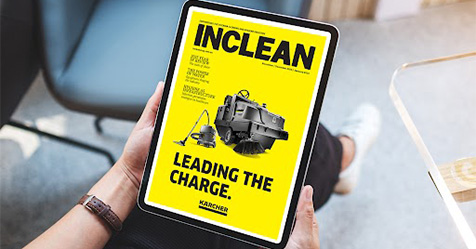During back-to-school season, schools and educational institutions are gearing up for the return of students, staff, and faculty. Beyond curriculum planning and administrative preparations, one of the most crucial components of a successful school year is ensuring a clean and safe environment.
Shared spaces in schools can bring students and staff together, but they can also become hotspots for germ transmission. Robust cleaning protocols are not just about health and safety, they are also foundational to creating a welcoming and productive learning atmosphere. To foster this environment, schools must ensure that key areas are addressed in their cleaning plans.
Schools encompass a variety of distinct spaces—classrooms, cafeterias, restrooms, libraries, and gyms—each requiring tailored cleaning strategies. A study published in the journal Influenza and Other Respiratory Viruses found that school absenteeism is due to illness spikes during the early months of the school year, largely driven by the transmission of bacteria and viruses. A well-structured cleaning and maintenance plan does more than mitigate health risks; it sends a powerful message to parents, teachers, and students that their safety and well-being are paramount.
Overlooked germ hotspots
Back-to-school cleaning plans must prioritize high-touch surfaces, yet it’s easy for some areas to be forgotten in the hustle of daily routines. Often-overlooked areas such as door handles, light switches, and gym equipment are prime locations to spread illnesses like the flu, the common cold, and other contagious viruses. Regular and thorough disinfection can significantly reduce the risk of germ transmission.
Equally important, food contact surfaces such as meal prep areas, cafeteria tables, meal trays, and condiment stations demand careful attention and proper sanitizing to comply with food code regulations and prevent foodborne illnesses.
A back-to-school essential
Maintaining a clean, safe, and healthy school environment requires solutions that are not just effective but also practical for everyday use. Single-use wipes offer a simple, efficient way to encourage frequent cleaning, sanitizing, and disinfecting across campus. Benefits of using ready-to-use wipes include:
- Convenience and ease of use: Disposable wipes come pre-saturated, eliminating the need for preparing cleaning solutions, wringing out cloths, or dealing with heavy buckets. This simplicity makes them accessible for all staff members, not just custodial teams, enabling quick and effective cleaning on the spot.
- Hygiene and cross-contamination control: With cloths and buckets, cleaning water can quickly become dirty and turn the tools themselves into potential sources of contamination. Single-use wipes are pre-moistened with precise amounts of cleaning, sanitizing, or disinfecting agents and are discarded after each use—significantly reducing the risk of cross-contamination.
- Efficiency and Consistency: Disposable wipes provide a consistent application of cleaning or disinfecting agents to surfaces. This ensures even coverage and optimal performance, while eliminating the variability that comes with improperly mixed cleaning solutions in a bucket.
Daily school-cleaning routines
Maximizing the impact of cleaning protocols requires more than just effective products, it demands a practical, accessible approach that can be seamlessly adopted by all school staff—not just custodial teams. Disposable wipes provide an ideal solution for maintaining hygiene in diverse school environments. Here’s how schools can integrate wipes into daily routines:
Restrooms: High-touch surfaces such as sinks, faucets, stall doors, countertops, trash can lids, air hand dryers, restroom door push plates, and toilet handles can quickly become breeding grounds for germs if not cleaned regularly. Strategically placing disinfecting wipes in accessible areas empowers staff to address these surfaces on-the-spot, minimizing the opportunity for germs to spread.
Incorporating signage that reminds students and staff of the importance of hygiene, such as washing hands for at least 20 seconds, can help to reinforce good hand hygiene practices. These small but impactful measures signal to everyone that cleanliness and safety are top priorities in the school community.
Cafeterias: Food safety is critical in areas where meals are prepared and consumed. Food-contact-safe sanitizing wipes simplify cleaning tasks such as wiping down cafeteria tables, serving lines, and lunch trays between meal periods. Opting for sanitizing wipes that do not require water or rinsing can help staff maintain cleanliness efficiently.
Classrooms: Teachers can keep a canister of disinfecting wipes within reach to address germ hot spots throughout the day. High-touch surfaces such as desks, shared supplies, and whiteboard markers can be wiped down between classes. Hand hygiene wipes may also be employed, especially in lower grade levels where younger students may struggle with proper hand hygiene.
Digital Devices: Technology is an integral part of modern classrooms, but keyboards, screens, and mice are often overlooked during cleaning routines. Cleaning wipes specifically designed for hard, nonporous surfaces can ensure these devices are safely cleaned without risking damage. Their ease of use encourages regular maintenance, supporting both hygiene and functionality. Always follow the cleaning guidelines recommended by the product manufacturer.
Trusted partners
The back-to-school season is the ideal time to strengthen cleaning and maintenance protocols. Partnering with trusted vendors ensures access to top-tier cleaning, sanitizing, and disinfecting products.
By investing in high-quality, convenient cleaning solutions and fostering a culture of shared responsibility, schools can instill confidence in students, staff, and parents regarding safety measures. This proactive approach not only creates a thriving school environment, but also helps reduce absenteeism—supporting long-term health and wellness in educational settings.



